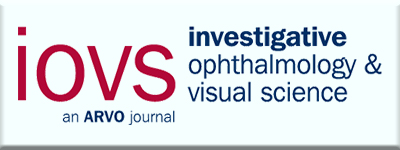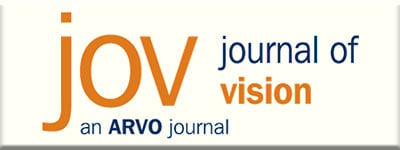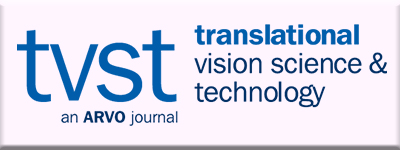Open Access of ARVO Journals
ARVO Journals
The history of ARVO's open access journals
Since January 2016, ARVO journals have been proud to be the leading fully open access (OA) eye and vision research journals (as defined in Journal Citation Reports). Fully open access means that upon publication articles can be read free-of-charge by anyone with an internet connection, using a personal computer, tablet or smartphone. Furthermore, ARVO journal authors now retain the copyright to their articles and determine the reuse of their content through a choice of Creative Commons (CC) licenses.

The internet made this level of accessibility technically possible, but it was ARVO's Board of Trustees' decision to eliminate paid journal subscriptions that drove the transition to open access. Moving to an OA model was an essential step in the process of innovations that started with the systematic recording of science in ancient academies and included the development of the printing press, the launch of the first scientific journal, and the creation of the internet. On a conceptual level, the spirit of open access (free access and liberal licenses for reuse of content) is consistent with the academic ethos of sharing ideas, collaborating and building on the work of others. On a practical level, open access allows people outside the specialized research community to fully benefit from its work, such as a patient or clinician seeking information relevant to a medical condition.
 Investigative Ophthalmology & Visual Science, (IOVS) has been reporting significant developments in ophthalmology and vision science since its inception in 1962, serving the full variety of topics represented by ARVO itself. IOVS became available online in July 1999 and moved to online only in 2010. ARVO membership provided free access to IOVS but the public remained under embargo. Even though subscription fees for IOVS made it possible to offset expenses for the journals, ARVO recognized that offering its flagship journal into an open access resource was in the best interest of its authors and advancing eye and vision science. IOVS became fully gold open access in 2016.
Investigative Ophthalmology & Visual Science, (IOVS) has been reporting significant developments in ophthalmology and vision science since its inception in 1962, serving the full variety of topics represented by ARVO itself. IOVS became available online in July 1999 and moved to online only in 2010. ARVO membership provided free access to IOVS but the public remained under embargo. Even though subscription fees for IOVS made it possible to offset expenses for the journals, ARVO recognized that offering its flagship journal into an open access resource was in the best interest of its authors and advancing eye and vision science. IOVS became fully gold open access in 2016.
"On a conceptual level, the spirit of open access (free access and liberal licenses for reuse of content) is consistent with the academic ethos of sharing ideas, collaborating and building on the work of others."
 Journal of Vision (JOV) launched in 2001 as an online-only, free-to-read resource, which was pioneering at that time. The specialized community of vision scientists it represents remains staunch in their support of open access. The principles of the journal were captured by the motto printed on the first journal promotional t-shirts in 2001: “Be Free, Be Everywhere, Be Forever.” Starting in 2016 with the move to full OA, JOV authors also began to retain copyright to their work, which, like the other ARVO journals, was then published under CC licenses. A fascinating detailed account of the history of JOV can be found in the 2011 editorial by its founding editor (and current EIC) Andrew Watson.
Journal of Vision (JOV) launched in 2001 as an online-only, free-to-read resource, which was pioneering at that time. The specialized community of vision scientists it represents remains staunch in their support of open access. The principles of the journal were captured by the motto printed on the first journal promotional t-shirts in 2001: “Be Free, Be Everywhere, Be Forever.” Starting in 2016 with the move to full OA, JOV authors also began to retain copyright to their work, which, like the other ARVO journals, was then published under CC licenses. A fascinating detailed account of the history of JOV can be found in the 2011 editorial by its founding editor (and current EIC) Andrew Watson.
 Translational Vision Science & Technology (TVST) launched in 2012 as an online-only, free-to-read resource, focusing exclusively on translational research. TVST received its first Impact Factor in 2016, four years after its launch. Since then, its annual submissions have more than tripled, allowing it to grow even while its editors maintain strict acceptance criteria to ensure quality.
Translational Vision Science & Technology (TVST) launched in 2012 as an online-only, free-to-read resource, focusing exclusively on translational research. TVST received its first Impact Factor in 2016, four years after its launch. Since then, its annual submissions have more than tripled, allowing it to grow even while its editors maintain strict acceptance criteria to ensure quality.
With the switch to open access, ARVO journals are ahead of a seemingly unstoppable trend, and the journey is far from over. Recent examples of momentum towards universal OA include Plan S. This program, which was advanced by a consortium of European research agencies, will mandate publication in fully OA journals by its researchers. At the same time, news in Nature highlights research institutions such as a consortium of German Universities refusing to renew their subscriptions to Elsevier journals, and a more recent article in The Scientist reports on a standoff between Elsevier and the University of California libraries over journal subscriptions and OA, leading to prominent editors of Cell Press suspending their service.
ARVO is pleased to be ahead of the open access wave making it possible to concentrate on improving the author experience and implementing future publishing innovations.
